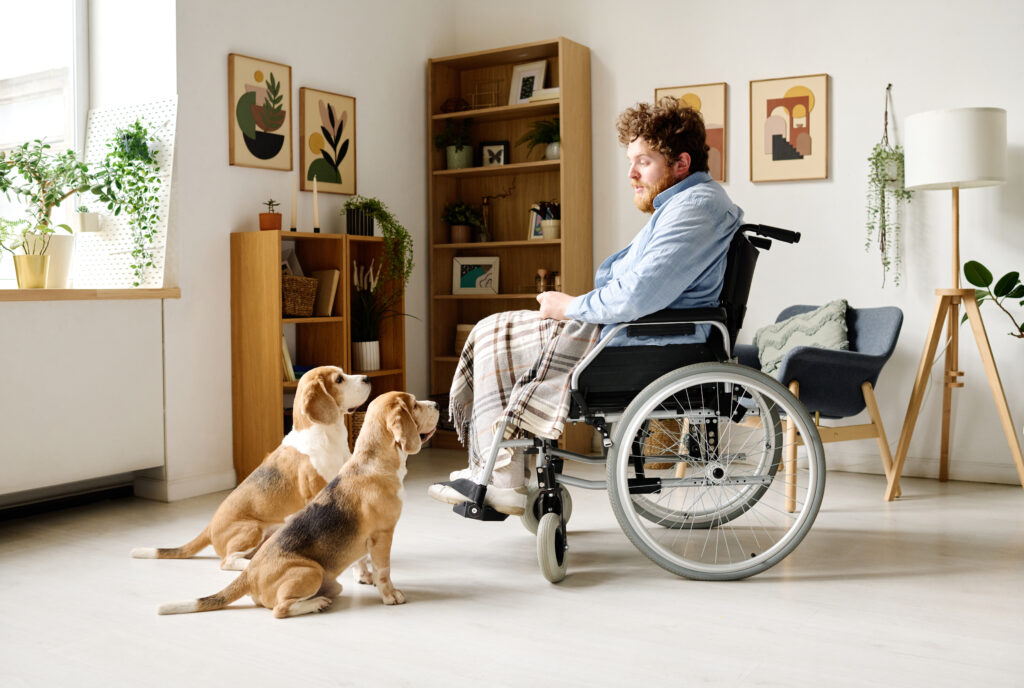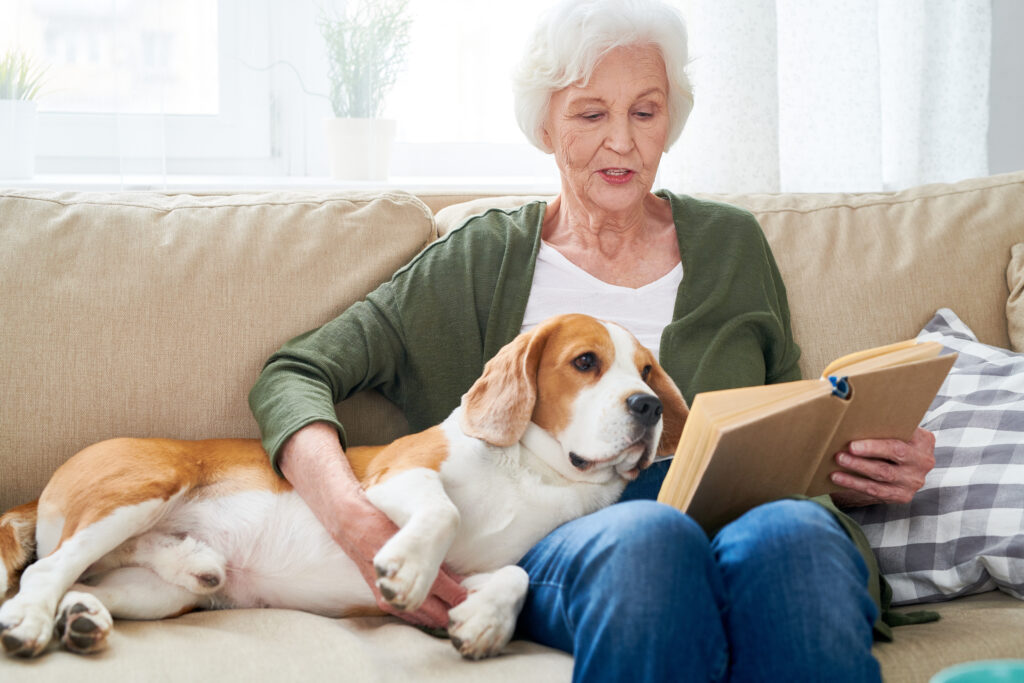Emotional support dogs provide so much relief for people who suffer from anxiety or other mental health issues, but training them can be a challenge. How do you train an emotional support dog?
Training an emotional support dog should be done with the oversight of a professional dog behaviorist, but you can take several steps to help support your dog’s training as well. Teach them basic commands, socialize them, and address anxious behavior early.
Rearing an emotional support dog to become a trusted ally in the battle against anxiety is often a difficult challenge, but thankfully, there are lots of professional resources out there to help you. The rest of this article will address how to train an emotional support dog.
Choose the Right Dog
The first and most important step in finding your perfect companion is to pick the right dog. All dogs have individual personalities, but in general, you’re looking for a breed that doesn’t tend to be hyper or prone to aggression.

Companionship and affection are a must when picking the right emotional support dog. The following are top-rated breeds for emotional support dog:
- Golden Retriever
- Labrador Retriever
- American Staffordshire Terrier
- Corgi
- Yorkshire Terrier
Trained right, any breed of dog can be an emotional support animal, but these breeds have a good disposition, are eager to please, and are highly affectionate.
With that being said, much of how a particular dog will turn out is dependent on how they are raised, and you have to keep in mind that any dog, even a good-natured one, has physical activity, socialization, dietary, and companionship needs that must be met.
Take Your Dog to Training Classes

The best way to get your dog to the level of an emotional support animal is to take them to classes under the supervision of a certified trainer.
Of course, the training required will differ depending on whether you’re wanting a service dog or an emotional support dog. The two are often conflated.
Either way, if you want your dog to be well-mannered, obedience classes are a good option. You certainly don’t want your dog to have issues with nervousness or anxiety when their main purpose is to provide you with comfort during rough spells.
Create a Positive Home Environment
There’s a whole wealth of information out there about how to train your dog at home, but the gist of it is that if you want a dog who isn’t nervous and who is present when you need them to be, you need to meet their needs—socializing, dieting, exercising—everything, in order to keep your dog calm and happy.
Establish a regular routine of walks and visits to the dog park for socialization, feed a diet of high-quality foods, and start basic obedience training with commands like sit, down, and stay. Creating a bond of trust between you and your dog is a crucial first step in training them to be a beneficial emotional support dog.








